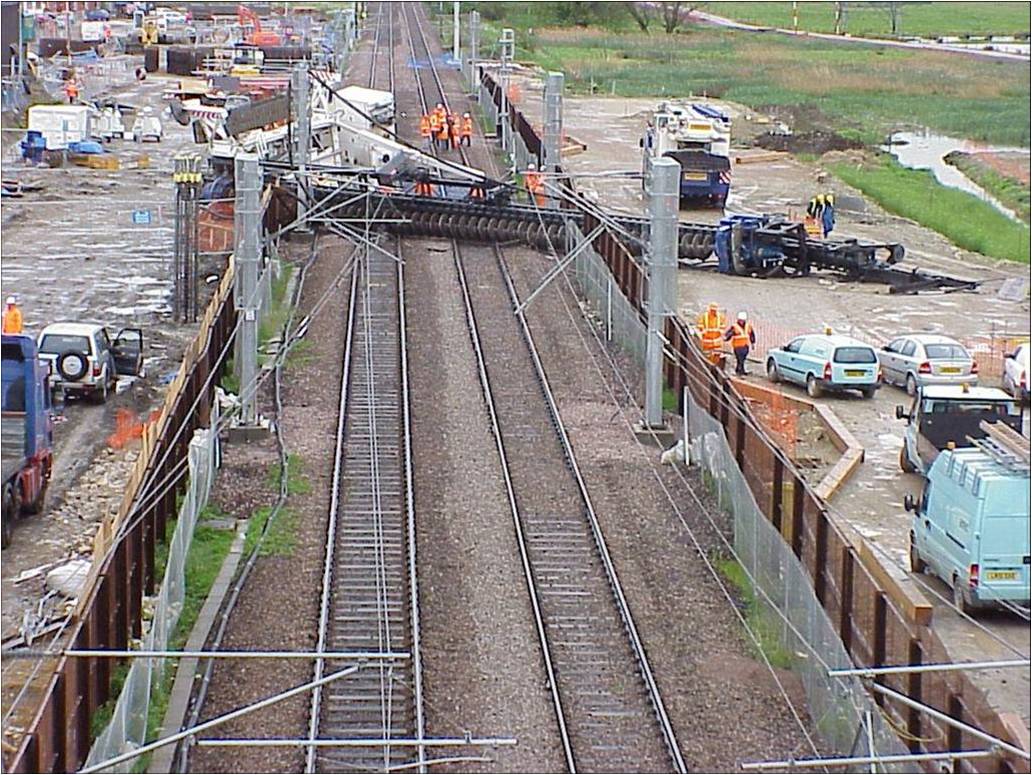Working Platforms

“ One third of accidents in the piling industry result from defects in the working platform” – (Terry Bolsher Chairman of the UK Federation of Piling Specialists).
The experience in Australia is not dissimilar to the UK. Ground supported working platforms are critical for heavy equipment stability, and modern piling equipment is becoming heavier with higher centres of gravity to cater for the ever increasing market for deeper foundations. Every incident occurring and every “near miss” involving unsafe working platforms is a potential fatality.
The responsibility for the design, construction, maintenance and repair of a working platform should be taken by the organisation that has continuous control of ALL of the project activities, the Principal Contractor is best placed to fill this role. Most incidents involving the failure of the working platform are due to the failure to maintain the platform during pile installation. For example, failure to properly backfill and compact penetrations through the platform, such as backfilling completed piles with low cutoffs, backfilling of trenches and stormwater excavations.
The WPC confirms that the working platform has been properly designed, constructed in accordance with the design, and will be adequately maintained to ensure that the integrity of the platform is likewise maintained. The WPC requires the signature of the Principal Contractor and the signature of a third party geotechnical engineer and must be handed to the Piling Contractor before piling or other foundation work commences on site. The use of the WPC is a way of increasing the awareness of working platform safety and the importance of maintaining the platform in good condition throughout the course of the contract.
- Working Platform Certificate (WPC) developed for Australian use.- Working Platform Certificate (WPC) developed for Australian use.
- The FPS in the UK in conjunction with the Building Research Establishment (BRE) have produced a good practice guide to the design, installation, maintenance and repair of ground supported working platforms. BR470 ISBN 1 86081 7009
- “Working Platforms for tracked plant”.
- The BRE design method for calculating the thickness of the working platform requires the use of realistic parameters for the properties of both the platform material and the underlying stratum. A paper discussing the relationship between the platform thickness to the choice of parameters is available – “Working Platform Design Sensitivity”.
- Track bearing pressures calculated for use in the BRE design method are commonly much higher than given by a simple calculation of the total weight divided by the total track area. Calculation of the track bearing pressures in an appropriate manner consistent with the BRE design method is a fundamental requirement of its use and the use of bearing pressures calculated by any other means could potentially lead to an unsafe working platform design. Guidance on how to calculate pressures for the BRE design method can be found in the paper “Calculation of Track Bearing Pressures for Platform Design” and the “Rig Loading Spreadsheet”.
- Another important document worth noting is Guide to hydraulically bound working platforms.
- The colour poster attached, graphically demonstrates the importance of a safe Working Platform and raises awareness to all workers onsite. Poster can be placed on site notice boards. PDF link below.
- Frequently Asked Questions – a summary sheet listing frequently asked questions regarding the Working Platform initiative has been prepared for use by Principal and Piling Contractors for discussion at the tender stage of a project. PDF link below.
![]() PFSF Working Platform Certificate A4 Rev 20221212
PFSF Working Platform Certificate A4 Rev 20221212
![]() FPS Rig Track Pressure Calculation Tool – 3.0
FPS Rig Track Pressure Calculation Tool – 3.0

